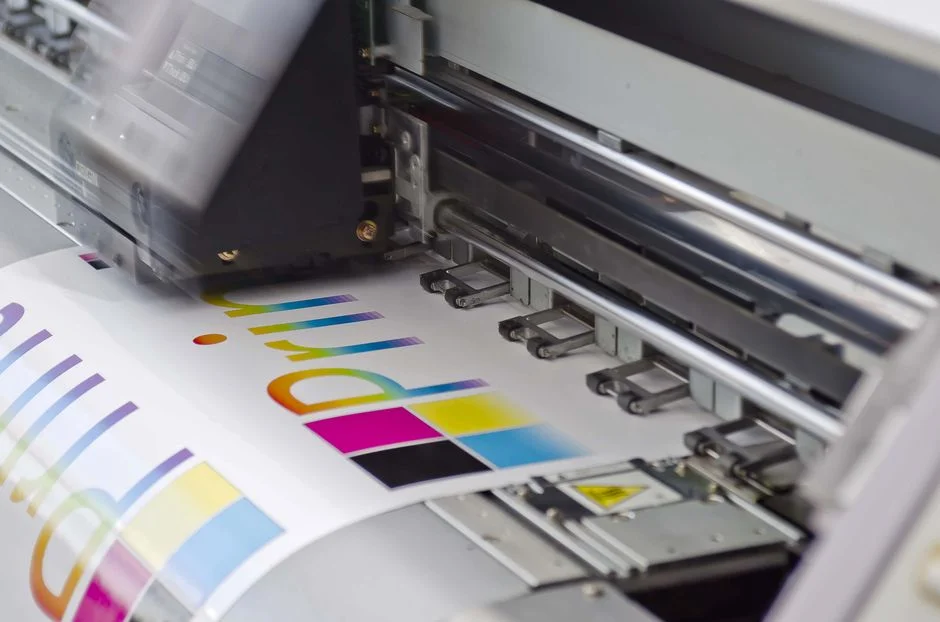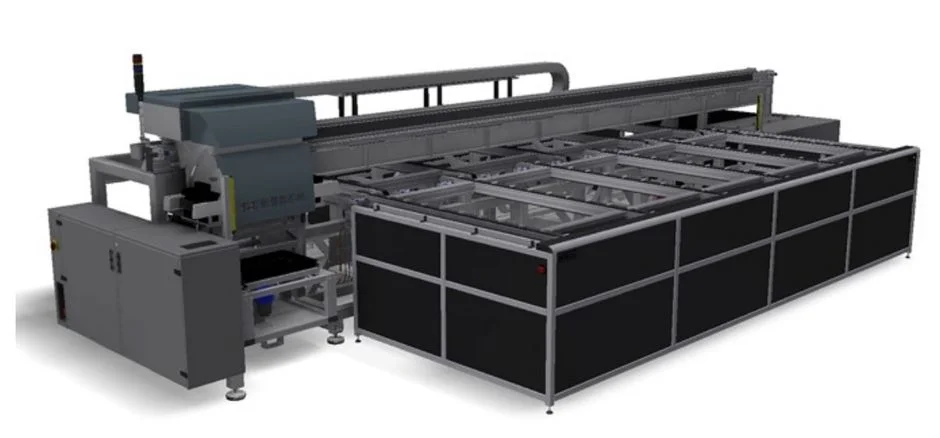All you need to know about Digital Printing
Just a few decades ago printing represented a time consuming and resource intensive process. With the rise of the digital age this changed drastically, as also printing went digital. While analog printing with options such as Offset and Tampon Printing are still viable in some cases, companies who want to print large volumes in a cost-effective way tend to lean more into newer digital printing possibilities, that we are now going to explain further.
Types of Digital Printing
Digital printing encompasses several different types, including inkjet printing, laser printing and dye-sublimation. Each type has its own niche application(s) – therefore it is important for companies to get to know all the possibilities first before deciding on a technology fit for own production purposes.
- Inkjet Printing: Inkjet printing is a digital printing technology that relies on tiny droplets of liquid ink to create images on various surfaces. These droplets are expelled from a printhead onto the substrate in a controlled and precise manner. Inkjet printers are versatile and can produce high-quality prints with a wide range of colors and details. This technology is commonly used for both text and graphics, making it suitable for applications ranging from document printing to photo reproduction.
- Laser Printing: Laser printing is a digital printing technology that uses a laser beam to produce text and graphics on paper. The process involves creating an electrostatic image on a photosensitive drum or belt, attracting toner particles to form the desired image. The toner is then fused onto the paper using heat, resulting in sharp and precise prints. Laser printers are commonly used in offices due to their printing speeds, high-resolution capabilities, and suitability for large-volume printing tasks.
- Dye Sublimation: Dye-sublimation involves transferring dye onto a substrate through heat, providing vibrant and durable results, often employed in producing photo prints and textiles.

How Digital Printing Works
Digital printing involves creating images directly from digital files, allowing for quick and customizable output without the need for printing plates. In contrast, analog printing, such as offset or letterpress printing, requires these physical plates and often involves a more complex setup. Digital printing offers greater flexibility, allowing for variable data printing and shorter print runs, while analog printing is typically more cost-effective for large-scale production. The digital process excels in reproducing intricate details and supports on-demand printing, contrary to analog methods that may require longer ramp-up times but can be more economical for high-volume jobs.

Inkjet Printing
As mentioned previously Inkjet Printing relies on tiny droplets of ink, expelled through special printheads. These printheads, equipped with microscopic nozzles, precisely control the placement of the ink droplets, resulting in detailed and vibrant prints. Inkjet printers can be categorized into two main types: continuous inkjet (CIJ) and drop-on-demand (DOD). CIJ printers emit a continuous stream of droplets, with a deflection system directing specific droplets onto the substrate, while DOD printers release droplets as needed.
One of the notable features of inkjet printing is its ability to achieve high resolutions, typically measured in dots per inch (DPI). Higher DPI values result in sharper and more detailed prints. This technology is widely used in photo printing, graphic design, and promotional material production due to its capacity to reproduce intricate details and a broad spectrum of colors. Inkjet printing also allows for on-demand printing, making it suitable for short print runs and personalized documents. Additionally, advancements in technology have led to the development of wide-format inkjet printers capable of producing large-scale prints for applications such as banners, posters, and signage.
While inkjet printing excels in versatility and quality, it may have limitations when it comes to cost-effectiveness for very high-volume printing compared to other technologies like offset printing. However, continuous improvements in inkjet technology continue to expand its capabilities and applications in the ever-evolving field of digital printing.
Which materials can be printed on?
Given that the geometry of the part(s) fits the printer, there are numerous substrates, that digital printing can work on. The most important examples include:
- Aluminium
- Steel
- PVC
- Concrete
- Cardboard
- Décor Paper
- And many more…
Industrial Digital Printing Applications
As broad as the selection of possible substrates, there is a wide range of applications, that digital printing can be used for. See below a few examples of how our TIGITAL Inks are used throughout different industries:
Facades
Whether it's aluminum panels or PVC sidings, boring facades are a thing of the past. Thanks to Digital Printing technologies, every panel can now boast unique designs, offering architects and designers endless possibilities. The secret to success lies in the durability of the inks used outdoors, which, in case of TIGITAL Inks, are warranted by TIGER Coatings and certified by IFO, ensuring they meet Qualideco Class 2 standards.

Floors
In the flooring industry, analog printing on laminate floors is considered state-of-the-art. It's an exceptionally cost-effective and resource-saving process, especially for high production volumes. However, over the last decade, there has been a steady rise in the variety of designs coupled with a decrease in the production volume of each design. This shift has prompted the industry to explore solutions in digital printing. The challenge for inkjet ink producers was to develop a system compatible with the lamination process. Today, many flooring printers in the market utilize TIGITAL Inks, meeting this demand effectively.

Profiles
Digital printing is a game changer for the profile decoration industry, whether it's applied to aluminum or PVC. The advantages of direct-to-object printing over traditional methods like sublimation or foil lamination are substantial, prompting numerous companies to shift towards digital production processes. This transformation has been made possible by specially developed and patented outdoor ink systems, paired with customized printers designed to accommodate various profile shapes.

Packaging
Packaging printing stands out as one of the most rapidly developing sectors in the world of digital printing solutions. As production runs decrease and time-to-market shrink, traditional analog printing methods struggle to keep pace. Consequently, digital printing has emerged as an increasingly popular and attractive alternative in recent years. A crucial aspect of its success in the packaging industry lies in the advancements made in high-speed digital printers for corrugated cardboard, coupled with specialized inks capable of meeting strict legal regulations, especially in sectors like the food industry. TIGITAL Water-based ink stands as a prime example of such innovative solutions.

Inks in Digital Printing
Inkjet as well as Laser Printers work with liquid inks. These can, depending on their composition be categorized into Water-based-, UV-, and Hybrid Inks.
- Water-based inkjet inks are commonly used in applications where environmental concerns, safety, and minimal VOC emissions are critical. They are suitable for indoor printing tasks such as office documents, graphic designs, and photo prints on porous substrates like paper. Their eco-friendly nature makes water-based inks a preferred choice for settings where ventilation may be limited.
- UV-curing inkjet inks find application when rapid curing and immediate adhesion are essential. Due to their quick curing process upon exposure to ultraviolet light, these inks are ideal for high-speed printing and drying on various substrates, including non-porous materials like plastic, glass, and metal. UV-curing inks are known for their durability and resistance, making them well-suited for outdoor applications such as signage and industrial printing, where robust performance is crucial. The versatility of UV-curing inks extends to their ability to create vibrant prints with excellent detail on a wide range of surfaces.
- A Hybrid ink is a UV-curing, water-based inkjet ink that unifies the advantages of both worlds of chemistry. In comparison to UV-curing inks, the migration performance of Hybrid inks is significantly better as no monomers are used in such formulations.
Digital Printing VS. Analog Printing
So, what does Digital Printing improve for me specifically? Well, that depends on the printing method you are currently using. See below a short summary of the most important benefits that digital printing, in our specific case inkjet printing, offers compared to standard analog printing options:
Inkjet printing offers on-demand and variable data printing capabilities, making it more versatile for short print runs and personalized content compared to offset printing. Additionally, inkjet technology eliminates the need for printing plates, reducing setup costs and making it a more cost-effective solution for smaller quantities. The precise control over droplet placement in inkjet printing results in high-resolution prints with intricate details.
Compared to tampon printing, inkjet printing provides a non-contact method, eliminating the need for physical contact between the printing mechanism and the substrate. This non-contact approach allows inkjet printers to handle delicate and uneven surfaces more effectively. Additionally, inkjet printing typically offers faster printing speeds and the ability to reproduce intricate details, making it suitable for high-quality graphics and variable data printing.
Inkjet printing excels in its ability to produce detailed and vibrant prints on a wide range of substrates, including textiles, without the need for heat transfer as in sublimation printing. Sublimation printing, on the other hand, is limited to polyester-based materials. Inkjet technology provides a more versatile solution for diverse applications, including photo printing and graphic design, with the flexibility to use various ink formulations.
Inkjet printing offers a digital and contactless process, eliminating the need for screens and stencils, which are required in traditional screen printing. This makes inkjet printing more cost-effective for short print runs and allows for quick design changes. Additionally, inkjet printing can achieve high-resolution prints with a wide color gamut, providing superior detail and color accuracy compared to screen printing.

Find the perfect ink for your application!
We are happy to share more knowledge and consult you on opportunities to use Digital Printing in your business. Feel free to contact us or have a look at our selection of inkjet inks first!
